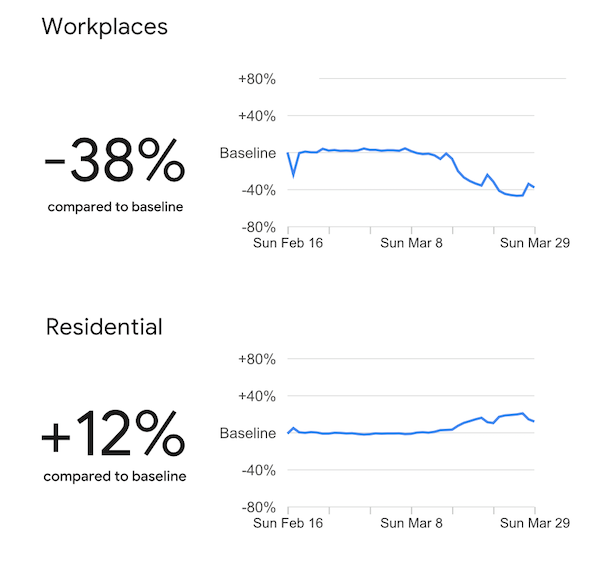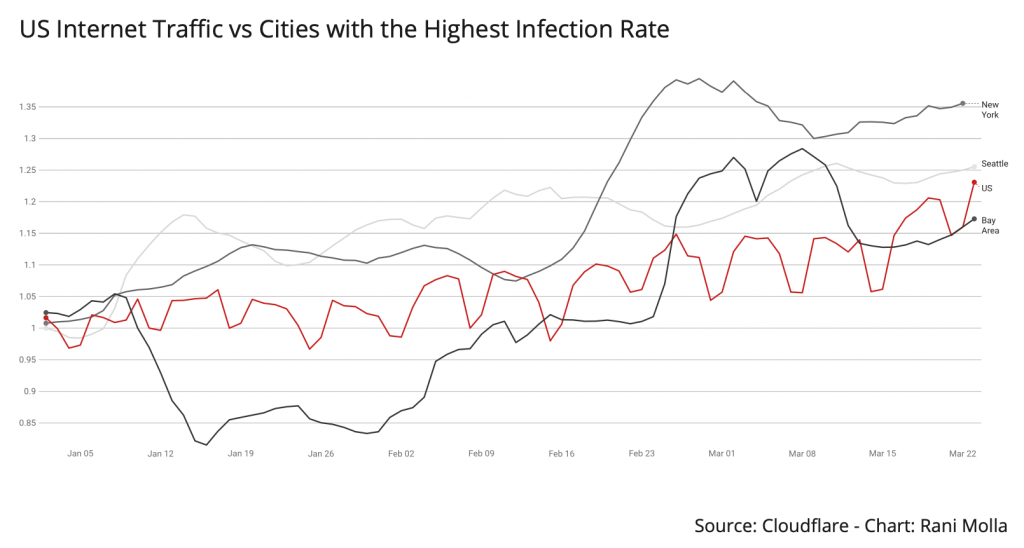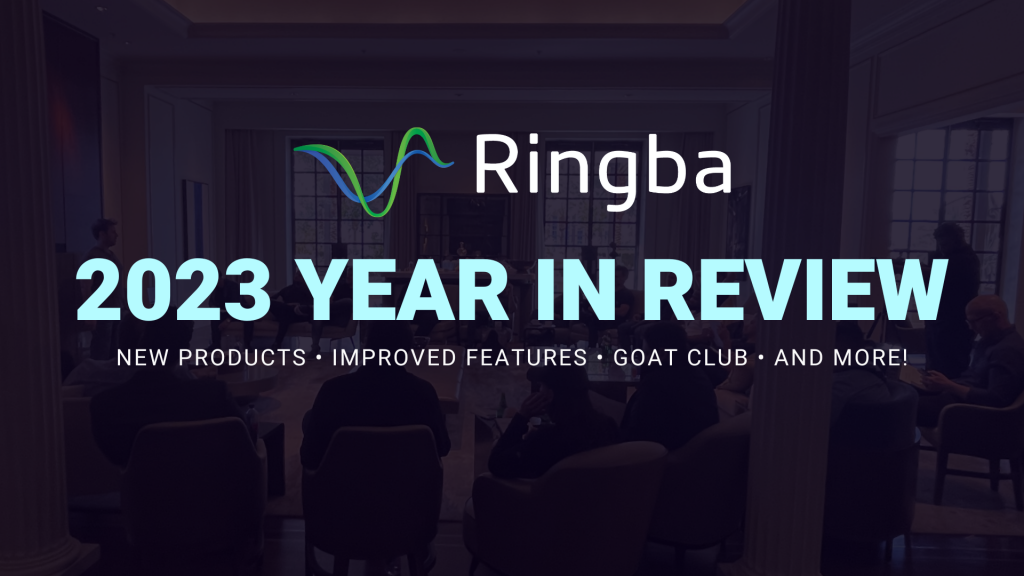Where to find pay per call opportunities in the midst of a global pandemic
Disclaimer
Certain statements in this White Paper constitute forward-looking statements. When used in this White Paper, the words “may,” “will,” “should,” “project,” “anticipate,” “believe,” “estimate,” “intend,” “expect,” “continue,” and similar expressions or the negatives thereof are generally intended to identify forward-looking statements. Such forward-looking statements, including the intended actions and performance objectives of the Company, involve known and unknown risks, uncertainties, and other important factors that could cause the actual results, performance, or achievements of the Company in its development of the Ringba’s products and services, to differ materially from any future results, performance, or achievements expressed or implied by such forward-looking statements.
No representation or warranty is made as to future performance or such forward-looking statements. All forward-looking statements in this White Paper speak only as of the date hereof. The Company expressly disclaims any obligation or undertaking to disseminate any updates or revisions to any forward-looking statement contained herein to reflect any change in its expectation with regard thereto or any change in events, conditions, or circumstances on which any such statement is based.
Introduction
The outbreak of COVID-19, more commonly known as the ‘Coronavirus’, has had an unprecedented impact on the world’s economy, forcing businesses to simultaneously adapt to government imposed lockdown orders and the inevitable changes in consumer behavior. This situation has had a particularly devastating effect on the call center industry, as call centers typically operate by grouping large numbers of people into compact spaces, creating the perfect environment for the spread of the virus.
With only a few hours notice, many of the world’s largest cities have issued bans on all gatherings of people, including businesses like call centers. Leadership teams are scrambling to take their operations remote with varying degrees of success. Some operations may face temporary closure, and many have, or will, shut down entirely. It is still unclear how closures of large numbers of contact centers due to the pandemic will affect the nearly 16 million agents¹ that work in the sector, or the pay per call industry which relies almost entirely on these facilities to answer calls.
On the other hand, there are more consumers at home on the internet looking for products and services across a wide range of industries than at any time in history.²

Furthermore, the United States government has committed to quickly pumping $2 trillion into the economy in a historically massive economic stimulus package to help stave off the crisis. This influx of liquidity combined with an emotionally captive audience will create opportunities at every economic level for both business to consumer and business to business transactions.
Challenges of Operating a Remote Call Center Workforce
Moving a call center from a centralized office location to a distributed remote workforce is a complex challenge regardless of timeline or preparation.
Many contact centers that handle pay per call traffic are business process outsourcing (“BPO”) organizations that take calls on behalf of their clients, with strict contractual obligations they must adhere to. These obligations typically cover agent supervision, data security, quality of service, and many key performance indicators (“KPIs”) the call center operators must meet.
For those call centers that are lucky enough to already have software that allows for remote agents, they do not face the uphill battle of buying, implementing, and training agents on an entirely new platform. However, there are still numerous challenges organizations must consider when setting up their agents remotely.
Remote agents rely on their home based internet service and personal computer to take calls and complete their work. In the United States and other developed countries, broadband internet and modern desktop or laptop computers are ubiquitous, however, in the offshore call center world home-based internet speeds are often unacceptably slow and hardware can be prohibitively expensive. In many call center hubs, agents at home rely on inexpensive metered mobile internet plans from their cellular phone or hotspot, making remote work an infeasible solution. Large contact center operators have had to get creative to keep services online for their clients. For instance, in some third world countries, SYNNEX Corporation (NYSE: SNX) is filling busses with office workstations and technology staff to deliver and install reliable computers at their agents’ homes.
Agents that have quickly transitioned to working from home may only be capable of providing sub-optimal service due to their environment. Ringba has observed remote agent disruptions on calls regardless of geographic location that include family members in the same rooms, children, television, radio, road noise, and other unpredictable events. In most cases when these disruptions are present, the conversion rate of a sales call also suffers. Companies transitioning to a remote call center workforce will need to consider if these distractions are acceptable and if they pose any unacceptable security risks.
Call centers that collect Personally Identifiable Information (“PII”), such as credit card data or health related information, must still meet all of their contractual and legal obligations with a remote workforce. This can prove to be a serious liability and may prevent some centers from migrating to a remote operation altogether.
To properly protect consumer information, most operations will implement some type of virtual private network (“VPN”) to grant access to customer relationship management (“CRM”) platforms, or remote desktops to allow external access to their customer data. These implementations, however, may not account for numerous environmental vulnerabilities that site-based contact centers solve with security cameras and strict access control rules, including someone sitting in the room next to the agent and writing down credit card numbers on paper. More sophisticated operations with their own development and technical teams have shared with Ringba that they are going so far as to require active webcams for all of their remote staff that can be monitored by security personnel, or by using facial recognition technology. Regardless of creative oversight programs, data theft is highly likely to happen in remote call center operations, especially those implementations that were rushed.
Entirely new systems and processes must be created to recreate training, coaching, human resources, and workforce management programs that were previously run on-site. These systems are critical to the call center world as turnover rates are notoriously high, averaging 30-45% on an annual basis.⁴ Recruiting and training teams will have to become highly creative to continue to meet their ongoing KPI and staffing requirements, further reducing available call center capacity for pay per callers.
Finding Pay Per Call Opportunities During the Pandemic
As contact centers of all sizes struggle to provide consistent capacity in a remote environment, buyer diversity is of utmost importance. Ringba clients and community members have reported in substantial numbers that buyers are facing capacity issues across a broad range of pay per call verticals.
The easiest way to diversify call buyer coverage is by using programmatic bidding and real-time call flow load balancing technologies. These solutions allow companies to sell their calls based on up to the minute market conditions and ensure that they have a large number of qualified buyers to take their calls. In an unpredictable economic environment, controlling call flow volatility will not only reduce potential losses, it will provide your organization with a competitive advantage against anyone who does not have the same level of technological sophistication.
“We are fortunate to have direct relationships with thousands of local, regional and national buyers so in the event one of our buyers stops taking calls, we usually have multiple buyers that will still want them,” says Bob Rothenberg, Chief Marketing Officer for eLocal. “As a result, we tend to have unlimited budgets and an appetite for unlimited volume.”
Specifically designed for pay per call, Ringba’s ping tree technology allows pay per call companies of all sizes to instantly access eLocal’s thousands of call buyers with a single integration. Ringba’s real-time load balancing functionality will determine the highest paying buyer available and reroute any phone calls that are not answered. This allows Ringba’s clients to fully automate the management of their call flow, and protect themselves from unexpected volatility or lack of human availability across an unlimited number of call buyers.
“Utilizing Ringba’s Ping Tree technology is like adding 20 or 30 different advertisers to your platform instantaneously,” says Blake Elliot, Director of Sales and Operations for HyperTarget Marketing. “It’s like a flip of a lightswitch.⁵”
Near Term Opportunities
The Ringba team polled numerous clients and partners that are involved in various segments of the pay per call industry, and reviewed platform-wide data to better understand trends in call volume and where new opportunities are appearing. Currently, consumers are exhibiting fear based behavior due to concerns for their own health and safety, the health and safety of their families, and the uncertainty around their economic future.⁶ Campaigns that cater to these concerns are showing consistently growing volume over the month of March, with conversion rates and earnings per call trending upwards. Based on our data, Ringba expects this trend to continue through the end of the summer.
When consumers experience fear and uncertainty, especially regarding their health, they seek out solutions for problems yet unseen. For instance, the final expense insurance industry is seeing significant growth in call volume, so much so that call centers are struggling to keep up with the demand.
A unique opportunity that is currently available for a limited amount of time is the health insurance vertical. Nine states have temporarily reopened their insurance enrollment periods to allow consumers to get the coverage they need if they were not prepared for the pandemic.⁷ Health insurance issuers have a seemingly endless demand for inbound calls in Colorado, Connecticut, Maryland, Massachusetts, Nevada, New York, Rhode Island, and Washington.
The home services category has numerous segments that are showing signs of consistent growth. For instance, consumers are upgrading their television, internet, and wireless services as a result of the additional time they are spending inside, and are in need of a greater than average amount of emergency services. Thankfully, many home services trades such as plumbing and electrical services are considered essential services and are excluded from stay-at-home orders.
“We have seen an increase in volume from the need-based, emergency home services categories like appliance repair, plumbing, pest control, HVAC, electricians, roofing, water damage, and more,” says Rothenberg.
As consumers brace themselves for financial uncertainty, campaigns where they can ‘switch and save’ including automotive insurance, cell phone plans, and more, have begun to grow in demand. Marketers should be thinking about how to craft their marketing messages around these changes in consumer behavior to capitalize on current market conditions.
How the Stimulus Bill Affects Pay Per Call
On March 27th, 2020 the President signed a historic $2 trillion stimulus package into law to help stabilize the American economy. The bill will positively impact the pay per call industry in a few ways, but unfortunately will provide no assistance to American companies that rely on a foreign workforce. This means that call center operations with locations overseas, regardless of being American owned or operated, will receive no direct relief from the stimulus package for their foreign employees.
Businesses on all levels of the pay per call value chain with onshore employees can benefit from the economic stimulus in various ways. Starting Friday April 2, 2020, banks that participate in the Small Business Administration’s programs will start issuing government backed stimulus loans for up to $10 million for businesses with 500 or less employees. Loan amounts are based on calculations of previous years operating costs, have a maximum of 4% annual interest, can be issued for up to a 10 year term, and do not require any kind of personal guarantee. The first 8 weeks of qualified expenses, which include items such as like payroll and rent, may qualify for partial loan forgiveness.⁸
This means that agencies, pay per call networks, call centers, brokers, call buyers, local businesses, and anyone else that is an American entity operating in the pay per call space should qualify for some type of government assistance under the bill.
Long Term Opportunities
Regardless of the economic stimulus, families in the United States will accrue significant amounts of credit card debt and will be seeking various forms of relief. Many small business owners will likely use personal financial instruments to shore up working capital deficiencies. Ringba forecasts debt consolidation offers, mortgage refinance offers, and other financial products will most likely see significant and consistent demand as economic recovery begins.
Even though the United States economy will be in the midst of a recession once the stay-at-home orders are lifted, Ringba expects to see a surge in hotel, flight, and cruise bookings as soon as people are able to travel again.
“Airlines have issued millions of credit vouchers and cruise lines are offering the biggest incentives we have seen since we opened more than 40 years ago,” says Kim Bushey, Senior Booking Agent for Richard’s World Travel. “We expect to see a significant amount of consumer and corporate travel activity in the third and fourth quarters of 2020 as consumers reschedule trips and businesspeople head to the thousands of trade shows that were postponed.”
Not all pay per call related businesses will be able to remain viable through the downturn and the following recovery period. Many will close their doors. This will result in downward pressure on advertising costs on every major platform, and media buyers should expect that pricing will remain lower throughout the end of 2020.
“As of right now, it is too early to tell what the long term effects are going to be but here at eLocal, we remain optimistic about the industry and the long term success of pay per call,” says Rothenberg.
If your organization is interested in working with eLocal, please reach out to the Ringba team and we’d be happy to connect you.
The Future
Ringba strongly believes that the pay per call sector will continue to grow and thrive. The diverse nature of the industry and the businesses it serves should provide enough stability for most industry players to survive this period of uncertainty and the subsequent economic recession. Our organization is committed to helping businesses get through this period of time and will continue to invest in new technology and innovation, trade shows, events, and resources for our amazing community.
While we are all isolated during this time, you are not alone. The Ringba team is working hard to help our clients navigate this difficult, but in many cases, opportune time, for the pay per call industry. Please reach out to us. We would love to hear from you and are happy to help in any way that we can.
Appendix
- Five9, Inc. Form 10-K – http://investors.five9.com/static-files/b98bd4af-a875-4b50-9612-1bcdf865e203
- Google US COVID-19 Community Mobility Report – https://www.gstatic.com/covid19/mobility/2020-03-29_US_Mobility_Report_en.pdf
- Source: CloudFlare. Chart: Rani Molla – https://datawrapper.dwcdn.net/7K0xa/3/
- QATC – Exploring Call Center Turnover Numbers, 2015 – http://www.qatc.org/winter-2015-connection/exploring-call-center-turnover-numbers/
- Ringba: HyperTarget Marketing Taps Into the Real-Time Call Bidding Ecosystem – https://cdn.ringba.com/case-studies/Ringba-HyperTarget-Marketing.pdf
- The Impact of an Epidemic Outbreak on Consumer Expenditures:An Empirical Assessment for MERS Korea – https://www.mdpi.com/2071-1050/8/5/454/pdf
- NPR: 9 States Reopen ACA Insurance Enrollment To Broaden Health Coverage – https://www.npr.org/sections/health-shots/2020/03/20/818981380/9-states-reopen-aca-insurance-enrollment-to-broaden-health-coverage
- Coronavirus Emergency Loans Guide and Checklist for Small Businesses and Nonprofits – https://www.uschamberfoundation.org/reports/coronavirus-emergency-loans-guide-and-checklist-small-businesses-and-nonprofits








